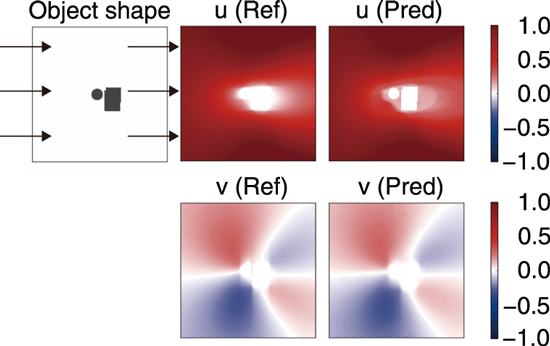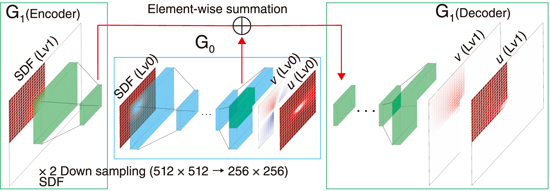
Fig.9-2 Flow field prediction with the proposed deep-learning model

Fig.9-3 Architecture of the proposed model
Deep-learning-based models using convolutional neural networks (CNNs) are widely used to generate photo-realistic images. These models have also been applied to surrogate models that approximate computational fluid dynamics (CFD) simulation results, which can be obtained significantly faster than CFD simulation results. A kind of surrogate models are needed for an instant prediction and large-scale parameter scans of flow fields. Because of memory-size constraints, conventional models have been applied up to a resolution of 512 × 512. For the high-resolution flow fields, a model has to predict the patched regions of flow fields independently, and this leads to inconsistency between the independently predicted flow fields.
In this work, we developed a new flow-prediction model to resolve the memory and connection issues simultaneously. A CNN-based model predicts the steady-state flow field around an object from a signed distance function (SDF), which represents both simple and complex object shapes in a universal way. Conventional models have applied CNNs to the patched SDF data to predict the patched flow field. In this work, we developed a model to use a low-resolution global SDF and a high-resolution patched SDF to predict a globally consistent high-resolution flow field (Fig.9-2).
Here, the low-resolution SDF is constructed from a high-resolution SDF by down-sampling.
In CNNs, the input data are first encoded and then decoded to the target output data. The developed model consists of an encoder/decoder (G0) for low-resolution data and another encoder/decoder (G1) for high-resolution patched data (Fig.9-3). Figure 9-3 shows the prediction of the flow field with 1024 × 1024 resolution, where a low-resolution (512 × 512) global SDF and a high-resolution (512 × 512) patched SDF (1/4 region) are used as input data to G0 and G1, respectively. The patched features (256 × 256) from G0 are merged with the down-sampled features (256 × 256) by G1. By combining the global information from the low-resolution data and the local structures from the high-resolution patched data, the model can predict the global high-resolution flow field consistently. Although such a model has also been proposed in the field of image processing, it uses the global low-resolution and high-resolution data. Our model is more memory-efficient and can still predict the global high-resolution flow field by using the patched high-resolution data. Using this model, we can predict the flow fields instantly and perform large-scale parameter scans.
This work was partly supported by Joint Usage/Research Center for Interdisciplinary Large-Scale Information Infrastructures (Project ID: jh210049-MDH).
(Yuichi Asahi)
<Previous: 9 Computational Science and E-Systems Research | Next: 9-2>